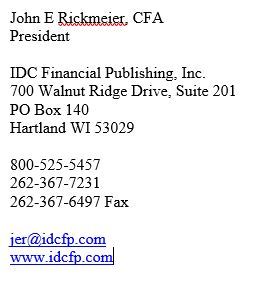Balance Sheet Cash Flow: A Guide to Liquidity
While earnings and capital are still the primary metric used to judge bank performance and measure the attractiveness of a bank’s stock price, a growing wave of investors focus on cash. Cash levels help reveal the financial strength and resources of a bank, while cash flow indicates the generation of new cash. Cash flow can reveal whether the bank is generating or consuming cash in its normal operation, if it is investing for the future, and whether it is rewarding investors with dividends or seeking additional capital from the equity or debt markets. Cash flow analysis often provides advance notice that a bank may be facing financial trouble even though earnings are still looking strong. Cash-flow is the oil which drives a bank’s engine and helps us determine if the motor running a bank is sufficiently “lubricated” or not.
Balance sheet cash flow measures the profit return on physical assets in computing operating cash flow. Balance sheet cash flow separates cash and equivalents (cash and balances due from depository institutions) from investments and loans when computing financial cash flow. The end result is balance sheet cash flow, which equals operating cash flow less financial cash flow.
Operating cash flow for a financial institution measures the liquidity demand from growth. Operating cash flow equals changes in retained earnings adjusted for changes in goodwill minus the quarterly changes in growth producing assets (property, equipment, other long term assets and other real estate owned). The purpose of operating cash flow is to determine the ability to finance internally the change in growth producing assets.
Financial cash flow isolates the sources and uses of funds, other than the changes in retained earnings, growth producing assets and cash and equivalents. Financial cash flow equals the change in liabilities (excluding retained earnings) less the change in loans and investments and other non-cash and equivalent current assets.
Balance sheet cash flow subtracts the financial cash flow from operating cash flow. If a financial institution finances its growth with increases in retained earnings equal to increases in growth producing assets, but the financial cash flow was positive, then the balance sheet cash flow would be negative, reflecting the change in liabilities (excluding retained earnings) is in excess of the change in loans and investments. An institution with poor loan quality or risky investments experiences asset write-offs or write-downs, and at the same time, deposits are increased or new borrowings incurred to finance the asset base. Balance sheet cash flow recognizes the shortfall and the risk to net capital of the institution.
The balance sheet cash flow technique has also proven to be a very effective tool for evaluating dividend safety/risk. Stable and/or growing cash-flows generated by operating activities are more likely to support a current dividend and open the door for future dividend hikes going forward. In contrast, banks that support their dividend with debt or non-operating cash may find themselves in a position to cut, suspend or eliminate their distributions. Our research has shown that banks that generate most of their cash flow from “operations” tend to have higher quality-of-earnings than banks that rely on non-cash balance sheet "maneuvers" to support earnings.

